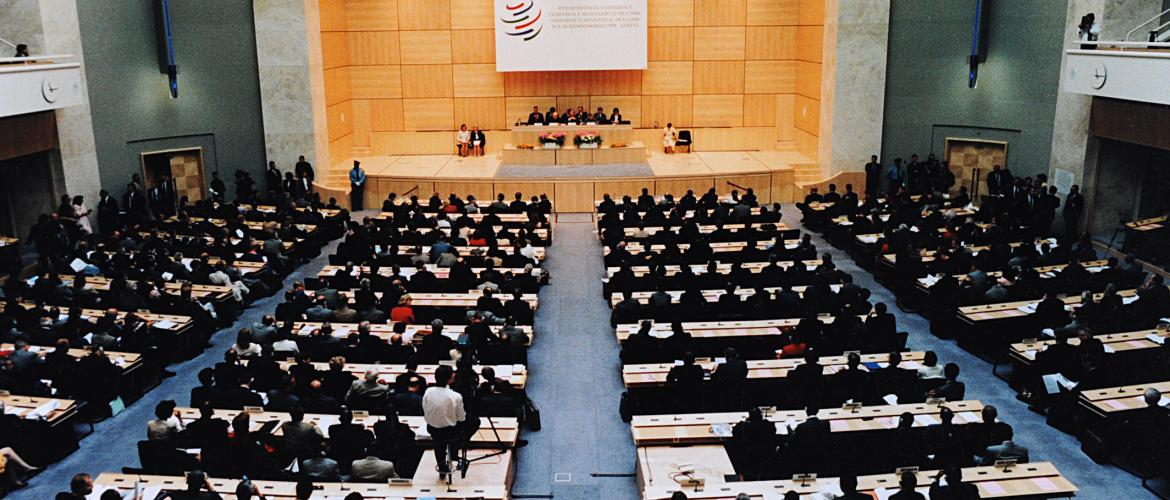Japan’s legal proceedings against India in WTO
May 17, 2019 | Expert Insights

Background
The World Trade Organization (WTO) is an intergovernmental organisation that regulates and governs world trade. Established under a multilateral agreement in 1995, the WTO has 140 members and 32 observer states, representing over 95% of world trade. Agreements administered by the WTO cover a broad range of goods and services, applying to virtually all practices that directly relate to trade. These include tariffs, subsidies, government procurement, and trade-related intellectual property rights. Coverage of the agreements grows through multilateral negotiations and agreements.
India-Japan relations have traditionally been strong. India is the largest recipient of Japanese aid, building infrastructure projects such as the Delhi Metro. Many Japanese companies operate manufacturing units in India, including Yamaha, Sony and Toyota. Japanese company Suzuki, along with an Indian partner, run Maruti Suzuki, the largest Indian car manufacturer. Bilateral trade between India and Japan reached US$ 15.71 billion in 2018, although the balance of trade heavily favours Japan.
Make in India is a government initiative aimed at encouraging companies to manufacture their products in India. Launched in 2014, the initiative allows 100% Foreign Direct Investment (FDI) in 25 sectors, with partial investment in space, defence and media. Japan and India announced a US$12 billion “Japan-India Make in India Special Finance Facility” fund to foster investment.
Analysis
Japan has complained at the WTO about Indian duties on mobile phones, base stations, routers, circuit boards and other information communication technology (ICT) components. The bilateral consultation is the first step in the WTO’s dispute settlement process. Under WTO regulations, India has 60 days to settle the dispute, after which Japan could approach the organisation to set up an adjudication panel to decide if Indian duties break international norms.
WTO membership specifies permitted import tariffs on several goods. In the current Japan-India dispute, import tariffs on all products in question are meant to be 0%. However, India has applied a 20% tariff on mobile phones and base stations. Other disputed components carry duties of between 10-20%. Japan argues that these rates are “clearly in excess” of those permitted by the WTO.
Data compiled by the International Trade Centre, a UN-WTO venture, shows that Japan only accounts for a relatively small proportion of the Indian ICT market. For example, India’s total mobile phone imports stand at around US$ 1.5 billion in 2018, of which Japan contributed less than US$ 2 million. China dominates the industry. In imports of switches and routers, the total market was valued at US$ 5.7 billion in 2018, of which Japan accounted for US$ 52 million. China and Vietnam dominate this industry. The complaint indicates that Japan is keen to penetrate the Indian market in these sectors.
India’s desire to foster domestic manufacturing through its Make in India initiative is evident through its imports of mobile phones. India’s total mobile phone imports have shrunk from US$ 7.1 billion in 2017 to US$ 1.5 billion in 2018. This is while India’s mobile phone market continued to expand at 14.5% in 2018. India’s Make in India campaign, Japan contends, has “continuously and systematically raise(d)” import duties in all sectors covered by the initiative.
The European Union (EU) recently filed a similar complaint with the WTO over Indian tariffs in a wide range of IT products. Reports suggest that Japan is considering cooperating with the EU in future WTO proceedings against India. Japan recently also called for India to review safeguard duties on solar cell imports although the matter has not been escalated to the WTO yet.
India has been promoting a Special and Differential Treatment (S&DT) plan at the WTO to grant emerging economies longer periods to implement agreements. The provision is aimed at protecting the interests of developing nations in international trade as they increase their capacity to handle trade disputes and enforce technical standards. This WTO reform is focused on asymmetries in global trade agreements that India believes favours economically developed countries. India has received support from Chinese and South African officials regarding the S&DT plan.
Assessment
Our assessment is that Japan views the higher custom duties imposed by India as a deterrent to compete in the domestic market. Japan feels that the Indian telecommunications market will provide significant business opportunity to its companies. We believe Japan perceives itself strategically as a more favourable communication ally to India than countries like China. India thinks that economically developed countries currently possess an advantage not available to those from the developing world.
We feel that India’s push to reform the WTO is intended to negate this advantage, which allows developing countries to address such asymmetries in global trade agreements. We estimate that India will continue to use tariffs in the near term to hedge its Make in India initiative, although protectionism is unlikely to attract significant FDI. India has a series of WTO complaints against it mainly filed by economically developed nations. This trend is likely to continue as the Indian government looks to protect the domestic market while pursuing WTO reforms.
Image Courtesy - World Trade Organization from Switzerland [CC BY-SA 2.0 (https://creativecommons.org/licenses/by-sa/2.0)]








Comments